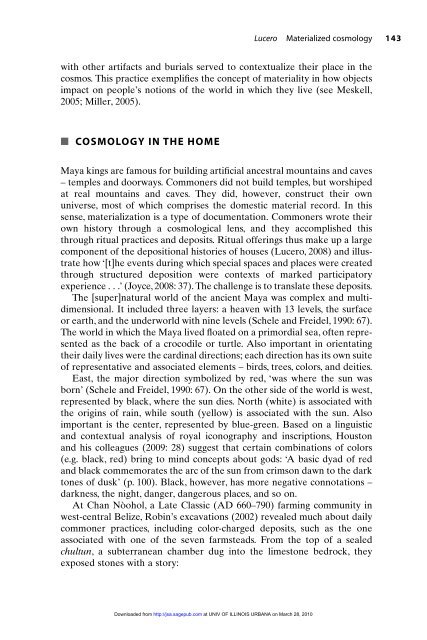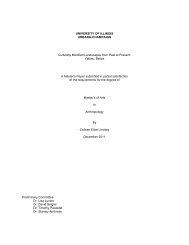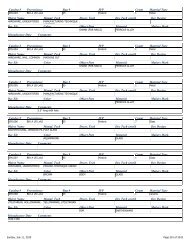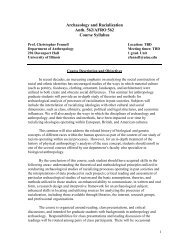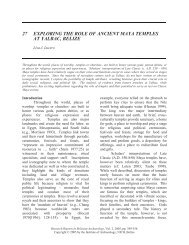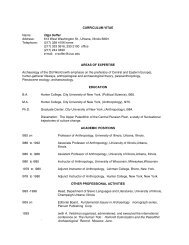Materialized Cosmology among Ancient Maya Commoners.
Materialized Cosmology among Ancient Maya Commoners.
Materialized Cosmology among Ancient Maya Commoners.
You also want an ePaper? Increase the reach of your titles
YUMPU automatically turns print PDFs into web optimized ePapers that Google loves.
Lucero<strong>Materialized</strong> cosmology143with other artifacts and burials served to contextualize their place in thecosmos. This practice exemplifies the concept of materiality in how objectsimpact on people’s notions of the world in which they live (see Meskell,2005; Miller, 2005).■ COSMOLOGY IN THE HOME<strong>Maya</strong> kings are famous for building artificial ancestral mountains and caves– temples and doorways. <strong>Commoners</strong> did not build temples, but worshipedat real mountains and caves. They did, however, construct their ownuniverse, most of which comprises the domestic material record. In thissense, materialization is a type of documentation. <strong>Commoners</strong> wrote theirown history through a cosmological lens, and they accomplished thisthrough ritual practices and deposits. Ritual offerings thus make up a largecomponent of the depositional histories of houses (Lucero, 2008) and illustratehow ‘[t]he events during which special spaces and places were createdthrough structured deposition were contexts of marked participatoryexperience . . .’ (Joyce, 2008: 37). The challenge is to translate these deposits.The [super]natural world of the ancient <strong>Maya</strong> was complex and multidimensional.It included three layers: a heaven with 13 levels, the surfaceor earth, and the underworld with nine levels (Schele and Freidel, 1990: 67).The world in which the <strong>Maya</strong> lived floated on a primordial sea, often representedas the back of a crocodile or turtle. Also important in orientatingtheir daily lives were the cardinal directions; each direction has its own suiteof representative and associated elements – birds, trees, colors, and deities.East, the major direction symbolized by red, ‘was where the sun wasborn’ (Schele and Freidel, 1990: 67). On the other side of the world is west,represented by black, where the sun dies. North (white) is associated withthe origins of rain, while south (yellow) is associated with the sun. Alsoimportant is the center, represented by blue-green. Based on a linguisticand contextual analysis of royal iconography and inscriptions, Houstonand his colleagues (2009: 28) suggest that certain combinations of colors(e.g. black, red) bring to mind concepts about gods: ‘A basic dyad of redand black commemorates the arc of the sun from crimson dawn to the darktones of dusk’ (p. 100). Black, however, has more negative connotations –darkness, the night, danger, dangerous places, and so on.At Chan Nòohol, a Late Classic (AD 660–790) farming community inwest-central Belize, Robin’s excavations (2002) revealed much about dailycommoner practices, including color-charged deposits, such as the oneassociated with one of the seven farmsteads. From the top of a sealedchultun, a subterranean chamber dug into the limestone bedrock, theyexposed stones with a story:Downloaded from http://jsa.sagepub.com at UNIV OF ILLINOIS URBANA on March 28, 2010


